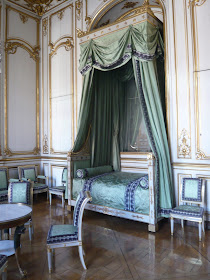 |
| Restoration workshop, Patrick Damiaens |
RESTORATION and RECONSTRUCTION of WOODCARVINGS and ORNAMENTS.
Restoring church furniture, panelling, pulpits, confessionals, ... is often necessary for the preservation of our patrimony.
It is
our duty to preserve this furniture, some of which is hundreds of years old,
for future generations.
Sometimes
fragments of the sculpture are missing or the woodcarving is damaged in such a
way that the need arises to replace it. If the broken-off fragments of the
woodcarving were preserved, we are able to reattach these in an appropriate
manner. If the ornaments are missing completely, we will take into
consideration the shape of the ornament or of the remnants, if any are still
present.
For the
more complex cases (this often involves sculptures) a plasticine model is created to visually aid
the woodcarver during his work.
After
thorough research of the remaining woodcarving, its style, character and the
plane of fracture we are able to form a clear image of the ornament and
the way it originally looked.
As the
restoration progresses, alterations to the carving are kept to a minimum. The objective is to make sure the woodcarving
stays as close to its original state as possible. Broken pieces of the carving
are glued back together again. Missing pieces are cut to shape.
 |
| Reconstruction of Liege Style Furniture |
Important
furniture that still has remnants of carvings or from which certain pieces are
missing can be fully restored thanks to historical research on the basis of
pictures, documents, markings and the character of the carving itself. We always
pay close attention to ensure that the authentic character of the period piece
is preserved.
This way
we prevent that valuable pieces are lost forever and help them find back their previous
lustre.
Reconstruction of wooden sculptures
The
woodcarving workshop of Patrick Damiaens is also specialized in restoring en
reconstructing wooden sculptures. It sometimes happens that a pulpit,
confessional or other piece of church furniture is missing part of its
ornamentation or carvings.
 |
This
often involves sculptures in the form of limbs (e.g. fingers). By studying the character of the
sculpture and possibly creating a plasticine model we are able to form an image
of the original woodcarving.
 |
| Reconstruction of carved Wall-Paneling |
 |
| A new dove for a pulpit (St-Anna church Bruges) |
When restoring a sculpture, a lot of attention is paid to detail, in
order to make sure that the reconstructed sculpture blends in perfectly with
its surroundings. Where possible, the same wood is used as that of the
piece of furniture, the sculpture or the surroundings, to ensure a proper
finish (colour,…) of the restored sculpture. This way it becomes one with its
surroundings again.
For more information: Patrick damiaens
Patrick Damiaens is Member of Pearls of Craftsmanship
For more information: Patrick damiaens
Patrick Damiaens is Member of Pearls of Craftsmanship

























